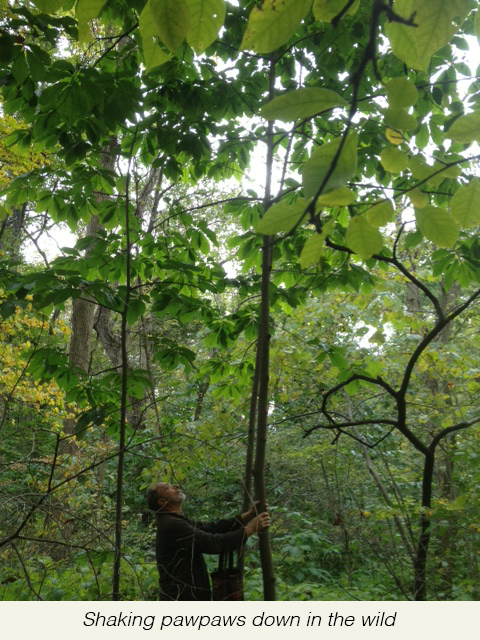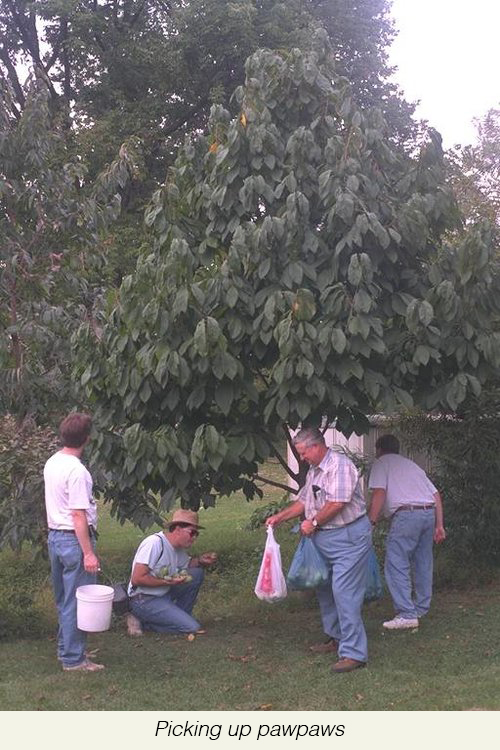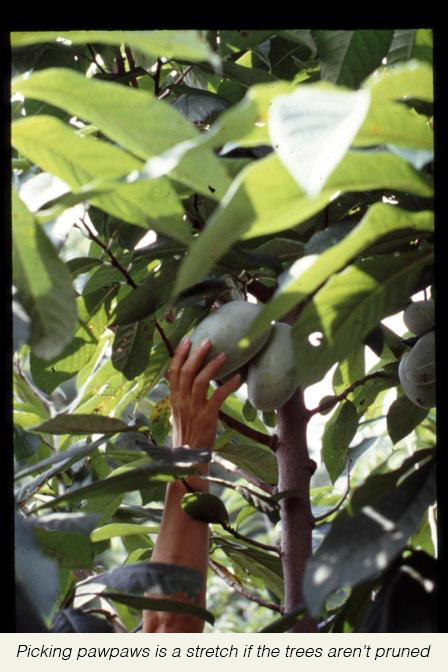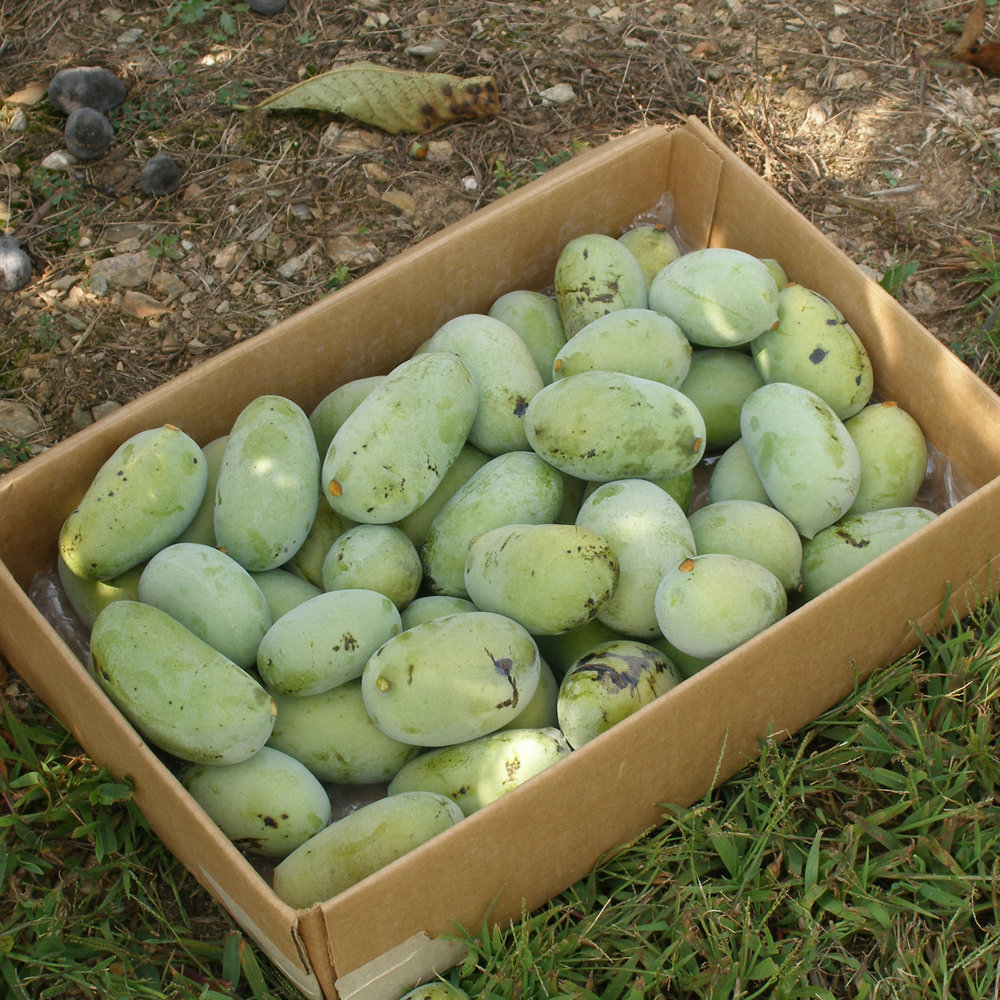How to Harvest
Harvesting
Pawpaw fruit is climacteric — a wide class of fruits that includes apple and peach. In the course of ripening, climacteric fruits evolve carbon dioxide, water vapor, and ethylene, a plant hormone that promotes ripening.
Pawpaws release large quantities of ethylene when ripening. When they are ripe, pawpaw fruits naturally fall from the tree. Pawpaws may be handpicked from the tree slightly under-ripe and still proceed to finish ripen normally. If picked too early, they will not finish ripening properly or at all.
The signs of ripeness are subtle and not easy to discern. Visual clues are few or lacking altogether. In some cultivars the skin may turn from green to a yellowish-green, although this depends on the season and weather. A more dependable sign is a slight softening of the fruit, similar to peaches.
Storing Fruit
Pawpaw fruits are highly perishable, comparable to raspberries. They have an active metabolism and high rate of respiration.
Pawpaws refrigerate well at standard refrigerator temperature. They may be stored that way for about a week if they are fully ripe. If they are underripe they may be stored for almost 3 weeks and then removed to room temperatures and finished ripening. Fully ripened fruit can only hold for 2 to 3 days at room temperature.
They are soft and easily bruised. As the fruit goes from ripe to overripe, the skin develops brown blotches and spots and gradually darkens to an overall brown and black. In the process the flavor deepens, developing caramel tones. Some people prefer their pawpaws this way. And some swear it is the only way to eat pawpaws.
Harvesting Gallery




